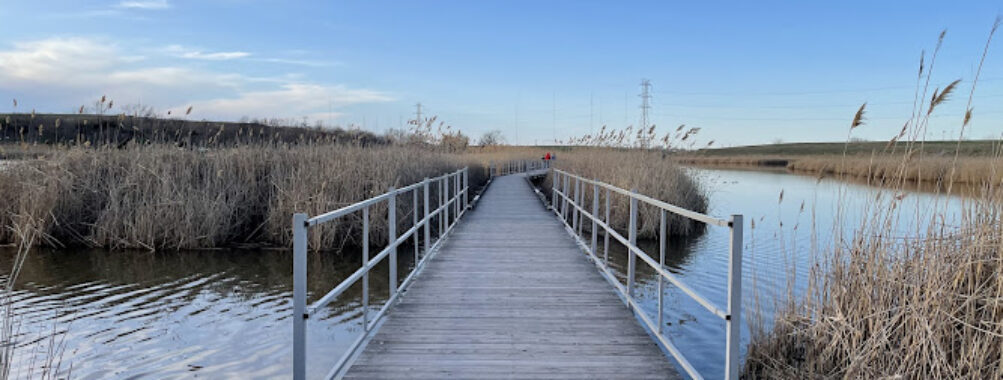
Richard W. DeKorte Park
Table of Contents
Description
Richard W. DeKorte Park stands as a testament to environmental transformation – it’s quite literally a phoenix rising from what was once a landfill. [Built atop this former disposal site](https://takeahike.us/richard-w-dekorte-park-lyndhurst-nj/), this innovative park now spans [640 acres](https://thelongpath.org/park/dekorte-park) of restored wetlands and serves as a critical stop along the Atlantic Flyway. What makes this place truly special is how it manages to blend urban and natural landscapes – you’ll find yourself walking along well-maintained trails while the Manhattan skyline creates an almost surreal backdrop.
Key Features
• [3.5 miles of stroller-friendly walking trails](https://theparkmama.com/2020/08/30/richard-dekorte-park-lyndhurst-nj/) winding through restored wetlands
• Meadowlands Environment Center with interactive ecological exhibits
• Multiple wildlife observation areas and bird blinds for nature photography
• Butterfly garden and pollinator habitats
• [Nearly 300 bird species](https://takeahike.us/richard-w-dekorte-park-lyndhurst-nj/) have been documented here
• Panoramic views of the New York City skyline
• Kingsland Impoundments and various marsh ecosystems
• Educational programs and environmental workshops
• ADA-accessible walkways and facilities
• Native plant gardens and natural habitats
Best Time to Visit
Early morning visits, particularly during spring and fall migrations, offer the most rewarding experiences. Spring brings waves of migrating shorebirds and warblers, while fall delivers spectacular waterfowl displays. Summer mornings are perfect for butterfly watching and enjoying the native wildflowers in full bloom. I’ve found weekday mornings tend to be quieter, giving you a more peaceful experience for wildlife observation. Winter shouldn’t be overlooked either – the stark beauty of snow-covered marshes against the city skyline creates incredible photo opportunities.
How to Get There
The park is situated in Lyndhurst, New Jersey, [near the American Dream Mall close to Secaucus](https://www.birdingplaces.eu/en/birdingplaces/united-states/richard-w-dekorte-park). While public transit options are limited, driving is straightforward with plenty of free parking available. You’ll want to use a GPS as the entrance can be a bit tricky to find your first time – trust me, I drove right past it on my first visit! The park operates [daily from 7:00 AM until dusk](https://www.birdingplaces.eu/en/birdingplaces/united-states/richard-w-dekorte-park), and there’s no entry fee.
Tips for Visiting
Pack those binoculars! Even if you’re not a serious birder, you’ll want them to fully appreciate the wildlife. Bring water and snacks as there aren’t any concession stands within the park. Comfortable walking shoes are a must – while the trails are well-maintained, you’ll likely spend several hours exploring. During summer months, don’t forget sunscreen and bug spray – the marshlands can get pretty buggy. I’d recommend downloading a bird identification app before your visit – it adds another layer of enjoyment when you can identify what you’re seeing.
Photography enthusiasts should definitely bring their zoom lenses, and early morning light provides the best conditions for capturing both wildlife and those stunning NYC skyline shots. Consider joining one of the guided nature walks if you’re new to birding – the local naturalists really know their stuff and can point out species you might otherwise miss.
Remember to check the weather forecast before heading out – the open marshland offers little shelter from rain or strong winds. And while the trails are wheelchair accessible, some of the longer boardwalks can be challenging during wet conditions. Dogs are welcome but must be leashed, and please remember to pack out what you pack in – this restored ecosystem depends on visitors being mindful of their impact.
Location
Places to Stay Near Richard W. DeKorte Park
Find and Book a Tour
Explore More Travel Guides
No reviews found! Be the first to review!
Soren
Used 10000 units out of a total of 10000 allowed units.